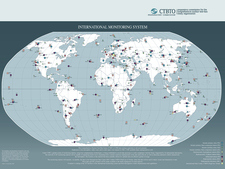-
Topics
subnavigation
Topics
Electromagnetic fields
- What are electromagnetic fields?
- Static and low-frequency fields
- Radiation protection relating to the expansion of the national grid
- High-frequency fields
- Radiation protection in mobile communication
Optical radiation
Ionising radiation
- What is ionising radiation?
- Radioactivity in the environment
- Applications in medicine
- Applications in daily life and in technology
- Effects
- What are the effects of radiation?
- Effects of selected radioactive materials
- Consequences of a radiation accident
- Cancer and leukaemia
- Genetic radiation effects
- Individual radiosensitivity
- Epidemiology of radiation-induced diseases
- Ionising radiation: positive effects?
- Risk estimation and assessment
- Radiation protection
- Nuclear accident management
- Service offers
-
The BfS
subnavigation
The BfS
- About us
- Science and research
- Laws and regulations
- BfS Topics in the Bundestag
- Links
BfS supports efforts of Comprehensive Test-Ban Treaty Organization
- The international Nuclear-Test-Ban Treaty Organization (CTBTO) registered earth tremors on 6 January 2016 at 2.30 a.m. Central European Time, which were probably caused by another underground nuclear weapons test in North Korea.
- Being an international network, the CTBTO is designed to trace secret nuclear weapons test world-wide. Various international institutions conducting seismic, infrasound and radioactivity measurements have been networked in the CTBTO.
- In the context of this Treaty, the BfS monitors for Germany the radioactivity in the air and supports the Federal Foreign Office in the technical evaluation of the data.

![]() The International IMS measuring network
Source: CTBTO
The International IMS measuring network
Source: CTBTO
The international Nuclear-Test-Ban Treaty Organization (CTBTO) registered earth tremors on 6 January 2016 at 2.30 a.m. Central European Time, which were probably caused by another underground nuclear weapons test in North Korea.
Various international institutions conducting seismic, infrasound and radioactivity measurements have been networked in the CTBTO. In the context of this Treaty, the Federal Office for Radiation Protection (BfS) monitors for Germany the radioactivity in the air and supports the Federal Foreign Office in the technical evaluation of the data.
Seismic measurements may give initial indications of underground nuclear weapons test
Being an international network, the CTBTO is designed to trace secret nuclear weapons test world-wide. Several dozens of measuring stations networked world-wide are capable of detecting even the smallest traces of radioactivity in the air. Other stations measure seismic signals. The BfS operates the only high-sensitivity radioactivity measuring station in Central Europe on the Schauinsland near Freiburg. Every day, air samples are taken and analysed with high-sensitivity measurement technology.
Should radioactive particles have leaked during this test, this would be detected at one of the nearest CTBTO measuring stations in Asia. Due to the long distance it is not to be expected that the Schauinsland measuring station will register traces of radioactivity. Since this was an underground explosion, it can be expected that the volume of possibly leaking radioactive substances is so low that it does not pose a health risk for travellers to the Far East region.
The recent seismic measurements may give initial indications of an underground nuclear weapons test. With a delay, radioactive rare gases generating during a nuclear weapons test may escape through the ground into the atmosphere. A final distinction between a chemical and a nuclear explosion can only be made after radioactive fission products have been detected at one of the measuring stations. The existing evidence indicates a nuclear explosion.
World-wide monitoring system
With the assistance of the signatory states, the CTBTO headquartered in Vienna is currently setting up a world-wide monitoring system with a network consisting of 321 measuring stations. It is capable of discovering, identifying and also localising a nuclear explosion at every place on earth with a high degree of probability. This system is based on
- 170 seismographs in the ground,
- 11 underwater microphones in the oceans,
- 60 infrasound microphones in the atmosphere, and
- 80 trace measuring stations for radioactivity in the air.
Germany operates five CTBTO stations: Two seismic, two infrasound and one radioactivity measuring stations.
State of 2016.01.06



